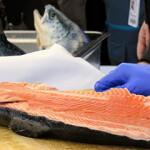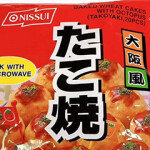Norcod doubles cod volume, on schedule to meet production goals

Trondheim, Norway-based Norcod, the Norwegian cod-farming venture, has announced a doubling of production volume.
Norcod CEO Christian Riber said the company had achieved “a new milestone”
“I’m really proud of what our team and excellent partners have achieved,” Riber told SeafoodSource.
The current target is for the farm to hit an annual capacity of 9,000 metric tons by 2021, increasing to a year-round supply of 25,000 tons by 2025. The latest development has Norcod on track to hit its production goals, according to the company’s production director, Rune Eriksen.
“We are on definitely on track and following the plan,” Eriksen said.
In January, Norcod transferred a new batch of sixth-generation cod fry from its joint venture partner Havlandet Norcod Yngel into two of its ongrowing facilities. The fish will remain in onshore tanks for the next six months, before transfer to sea in the summer, when their weight reaches 80 to 100 grams.
“We used the same juvenile facilities for our first batches of fry last year. The staff there have very good experience with cod, and we are pleased to say that the fry have settled well in the tanks and have a good appetite. These fish will be harvested in 2022, following a sea phase of 15 to 18 months,” Eriksen said.
Following a huge amount of groundwork, Riber is looking forward to generating the company’s first revenue this summer, with the first commercial harvest of around 6,000 MT of four-kilo cod. These fish comprise a pilot batch of 200,000 cod being ongrown at sea by partner Namdal Settefisk, with the remainder located at a Norcod farm.
“Both lots of fish are performing well, with high feed efficiency and negligible mortality,” Eriksen said. “Their strong biological performance means lowered risk and costs for us.”
Riber said Norcod’s strategy from the get-go has been to pay attention to details and to get everything right.
“That meant investing in new equipment and technology, maintaining tight control on the production of fry, controlling the feed and feeding, and ensuring we grow strong, healthy fish,” he said.
Norcod drew on information and experience gained by previous producers of cod, learning lessons from their successes and failures, Riber said.
“The pioneering production of cod started with wild fish, and scientists and fish farmers worked hard to crack the biological issues they encountered,” he said. “We are now on generation six, and the biology has advanced significantly, along with our strategy to start the fish on land and finish them at sea.”
One major difference between Norcod and past producers – all of which have ultimately failed – was having the foresight to secure buyers in advance, Riber said.
“We understood that it was extremely important to have the market with us, so we developed an early relationship with the Sirena Group in Denmark, which is our largest shareholder. Sirena is confident it can open up new markets and achieve the right price for our high-quality fish. We already have buyers lined up eagerly awaiting the product,” he said.
The initial target market for whole fish is Spain, Denmark, and the United Kingdom, with value-added cod fillets destined for France, Germany, and the U.S.
“A test harvest in December allowed us to show the quality of our fish to a selected group of buyers and chefs, and we were delighted by their feedback. It gave us confidence that once we launch our cod onto the market, sales will quickly pick up pace,” Riber said.
Norcod’s plan is to differentiate its fish from wild-caught fish, rather than attempt to market it as equivalent.
“We see our cod as a high-quality addition to the market, which will offer customers stable deliveries year-round, compared to seasonal wild cod. There will be a price differential, but our fish have an 8 percent higher yield than wild-caught fish, and provide a thicker, meatier fillet,” Riber said.
Norcod is committed to environmentally friendly production methods, to zero use of antibiotics, and use of feed with a high marine content and sustainable ingredients, Riber said.
“For us, the focus is on a blue future, and our environmental and sustainable footprints are very important to us. Our fish utilization of up to 98 percent will minimize waste, and we are undergoing a full life-cycle analysis as proof that we are best in class,” Riber said.
Norcod has already invested in hybrid service barges to reduce its carbon footprint, has agreements in place for a battery-electric service boat, plans to use underwater feeding systems, and is committed to minimal use of plastic.
The company has already been audited by GlobalG.A.P. and expects its certification to come through later in February, and is working through the Aquaculture Stewardship Council certification process, which it expects to achieve once a full cycle of production is reached in summer 2022. Riber said the company is also aiming for European Union Organic and Bio certification and hopes to have both certifications in hand by 2023 or 2024.
Norcod achieved an oversubscribed share issue and a listing on the Oslo Merkur market in October 2020, with the company now holding a listed value of approximately NOK 850 million (USD 93.3 million, EUR 82.7 million).
Photo courtesy of Norcod






Share